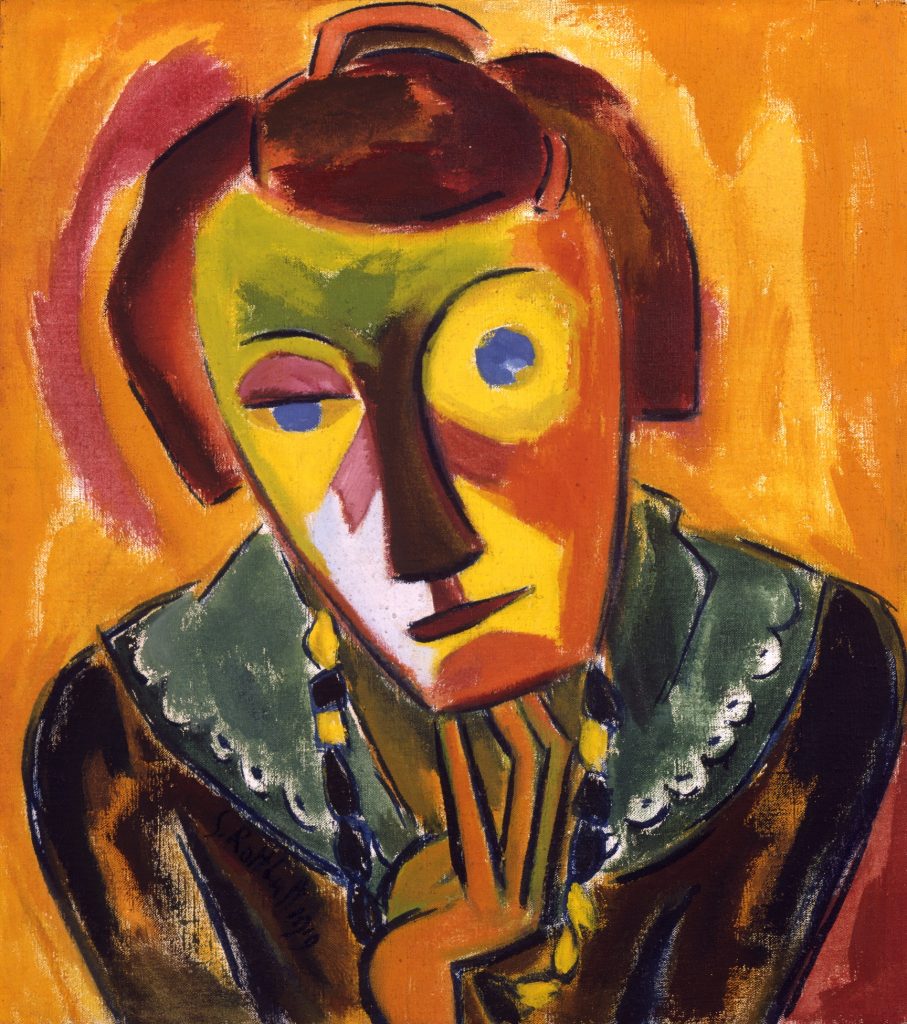Portrait of Emy (work of art)
Artwork Info
Key Ideas
- Karl Schmidt-Rottluff painted this portrait of his wife during their first year of marriage. He aimed to express how he felt about her rather than depict her realistically.
- Schmidt-Rottluff was one of the founders of German expressionism, an art movement of the early 1900s. Expressionist artists created works that showed their inner thoughts and feelings instead of making art that looked realistic.
- Schmidt-Rottluff was also influenced by cubism, an art movement of the 20th century. It focused on breaking up three-dimensional objects to make them look two-dimensional.
- Over 600 works by Schmidt-Rottluff were taken by the Nazis in the 1930s. Some of them were displayed in a “degenerate” art exhibition that was intended to mock and embarrass modern artists.
- Portrait of Emy was purchased by William R. Valentiner in 1919. He later became the first director of the North Carolina Museum of Art.
Learn More
Karl Schmidt-Rottluff created this painting during his first year of marriage to Emy Frisch. It depicts his wife’s face as a bold yet calm mask. The bright colors represent Emy’s lively and confident personality and the artist’s feelings about his wife.
I have no program, only the inner longing to grasp what I see and feel and to find the purest expression for it. I know I can approach these things only through art, rather than thoughts or words.
Karl Schmidt-Rottluff
Portrait of Emy shows the influence of the German expressionist and cubist art movements. Both art styles were designed to move away from the Western traditions of making art that looks realistic. Schmidt-Rottluff was one of the founders of the German expressionist art movement. Expressionist artists used abstract shapes, bold lines, and bright colors to communicate their feelings in their work. Cubist artists often simplified a subject into geometric shapes that showed different angles of the subject all at once. Many cubist artists were inspired by African art. In Portrait of Emy, the artist painted his wife’s face to resemble an African mask.
Schmidt-Rottluff’s wildly colorful artworks were not appreciated by everyone. A reproduction of Portrait of Emy was published in the 1928 book Kunst und Rasse (Art and Race) by Paul Schultz-Naumburg. Schultz-Naumburg’s celebration of “racially pure” Aryan art over “impure” and “sick” modern art influenced the policies of Hitler and the Nazi party. When the Nazis took control of Germany in the 1930s, they believed modern art to be “degenerate,” or immoral. Modern art represented the values the Nazis opposed. They stole, sold, and destroyed tens of thousands of artworks, including more than 600 paintings by Schmidt-Rottluff. The Nazis even displayed works of modern art in what they called the Degenerate Art exhibition. The exhibition was intended to insult and shame the artists.
Additional Resources
Resources for Teachers:
- Explore a lesson plan in which students create expressive portraits of their past, present, and future selves.
- Discover ways to apply Bloom’s Taxonomy to this work of art.
- Watch a video about the Nazi campaign against “degenerate” art.
Resources for Students:
- Watch a video about expressing emotions through art.
- Explore other paintings by Schmidt-Rottluff.
- Take a quiz to find out which art movement you identify with most.

